
Translate Video From Japanese to English Online for Free

Translate Video From Japanese to English Online for Free
Let’s say you’re a business owner or a content creator in Japan. If you want to broaden your horizons, you may need to translate videos from Japanese to English. This is because English is spoken globally. You can sell more, share knowledge, and connect with English speakers worldwide.
For streaming platforms, turning Japanese content into English is a ticket to reaching audiences all over the globe. And businesses using Japanese tech might need translated training videos for their remote workers.
Seeing this growing need, it’s clear you need effective video translation solutions. So, we’ve created a guide to help you choose the best method for each step, including using AI. Finding the right way to translate videos is important, so keep reading!

Part I. Completed Process To Translate Videos From Japanese to English
When you want to translate a video from Japanese to English, you can follow some general steps, no matter how you decide to do it. Let’s break down each step for you:
- Step 1: Video Transcription
Before you can translate, you need to understand what’s being said. So, the initial step is to do a video transcription. You can either hire professionals or use a Japanese-to-English video translator app to convert the spoken language to text.
Transcription captures all the Japanese dialogue, ensuring the English translation is spot-on. Having the text file lets you edit it, like shortening sentences or adjusting cultural references. This results in a smoother and more natural English video for you.
- Step 2: Translation
Once you have the transcript, you can translate the Japanese text into English. A good translation ensures the original message is accurately conveyed in the new language. It avoids any misunderstandings or misinterpretations for your English viewers. You have two options to do it. Both have strengths and weaknesses, so let’s see which suits your needs best.
- Professional Human Translation Services
When you want to translate a video from Japanese to English, a pro can make the sentences sound right for your audience. These professionals tweak the tone to be natural and engaging. If you go to translation agencies, they make sure the work is top-notch by going through strict editing and reviewing. However, human translation services cost more and take a bit more time than machine translation tools.
- Machine Translation Tools
Machine translation tools are fast and affordable. They can be a good option for short, simple videos where perfect accuracy isn’t critical. But it often struggles with complex language, cultural references, and humor.
- Step 3: Timing and Implementation
Let’s talk about making the Japanese to English video translation seamless. After translating, you want the words to match the original rhythm and pace of the speaker in the video. It keeps things feeling natural and engaging for you, the viewer. Plus, speakers use non-verbal cues like jokes, emotions, and pauses. Matching the translated text with these visual cues keeps the video’s meaning and impact intact.
How to do it? Professional workflows often use timecode, which gives each video frame a unique timestamp. It ensures super precise subtitle placement for that perfect synchronization. Some video editing tools even have “waveforms” to help visually line up subtitles with the spoken parts.

Here are several ways to add the translated Japanese text to your video:
- Subtitles
Subtitles are like on-screen translators for you. They show the English dialogue while the original Japanese audio goes on. It helps you understand if you get the visuals but not the language. The focus is on getting the main point across and sometimes making the sentences shorter for easier reading.
- Closed Captions
Like subtitles, closed captions (CC) are words shown on the screen. They go beyond spoken words, covering all the sounds you hear, like dialogue, music, and even background noises. The main goal is to help you, especially if you’re deaf or struggle with hearing. So, if you’re aiming for videos everyone can enjoy, try a video translator from Japanese to English with CC capabilities.
- Dubbing
Dubbing is a more intricate process where the original Japanese audio track is completely replaced. Voice actors step in to record the translated script in English. They try to sync up their words with the lip movements of the characters on screen. It makes it seem like the characters speak English right from the start, giving you a more immersive viewing experience.
- Voiceover
In this method, a narrator reads the translated script in English over the original Japanese audio. It’s often used in documentaries or educational videos when you need more info beyond just the dialogue.
- Step 4: Final Review and Approval
Alright, so you’re at the last step now. You’re giving the translated video a good check to ensure everything’s spot-on – accurate, consistent, and top-notch quality. It means looking out for any problems in the translation, timing, or how you choose to do it. Once you give the thumbs up to the final version, you’ve got a smooth and effective English video ready for your audience.
You might find the previous steps tedious and time-consuming. But what if you could translate your video from Japanese to English in minutes? That way, you could reach new markets and expand your influence faster. AI video translators like Wondershare Virbo can help you spread your work, passions, and stories to a global audience. Read on to learn more.
Part II. Virbo: Realistic AI Japanese to English Video Translator
You’re excited about your new product, but your explainer video feels like it’s only speaking to half the world. You know the potential exists, but the language barrier holds you back. Or perhaps you’ve captured stunning footage from your recent trip to Kyoto, but sharing it with your followers feels like a lost cause.
Here’s the deal: you don’t have to stick to a small crowd.

Get Started Online Free Download
Virbo uses the latest AI tech to automatically translate, dub voice, and add synced subtitles to your Japanese video. This app is simple to use and can translate video content into over 20 languages. Virbo translates Japanese to English videos in a few minutes – all free for videos under 2 minutes!
Here’s what makes Virbo stand out:
- Precise Lip-sync: Say goodbye to awkward, out-of-sync translations. Virbo AI video translator ensures the translated dialogue seamlessly matches the speaker’s lip movements and facial expressions, creating a natural and engaging experience (still in beta, but getting better every day!).
- AI Cloning Voices: Add engagement with Virbo’s AI-cloned voices that capture the essence of human speech. Choose from a range of natural-sounding voices that express the right emotions and add personality to your content.
- Soundtrack Reserved: Don’t lose the original soundtrack that sets the mood. Virbo allows you to keep it intact, enhancing its impact even in different languages.
- Versatile Compatibility: Virbo works across various platforms, including Windows, iOS, and Android. You can even use it online for ultimate flexibility.
- Affordable Excellence: Experience the power of AI video translation without breaking the bank. Virbo offers high-quality solutions at affordable prices, making them accessible to everyone.
Part III. How To Translate Japanese to English Video Using Virbo Automatically
Using Virbo AI video translator can help you be more productive. Here’s how to translate a video in Japanese to English online for free:
- Step 1: Go to Virbo AI video translator online from your browser for quick access. You can also download the app for your desktop. Once you’ve chosen your access point, sign in using your existing Google, Facebook, email, Apple, or Twitter account.
Get Started Online Free Download
- Step 2: Choose and upload your Japanese video file from your local storage. Ensure the video is between 10 seconds to 5 minutes long and in MP4 or MOV format, up to 500 MB for optimal processing.
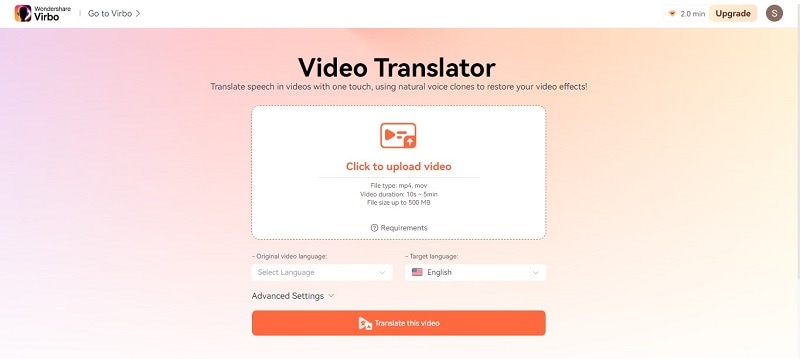
- Step 3: Specify Japanese as the Original video language and English as the desired Target language.
- Step 4: Virbo offers Advanced Settings to customize the translated view result. Toggle on the Lip-sync, Subtitle, and Proofread video script switches to enable them when needed.
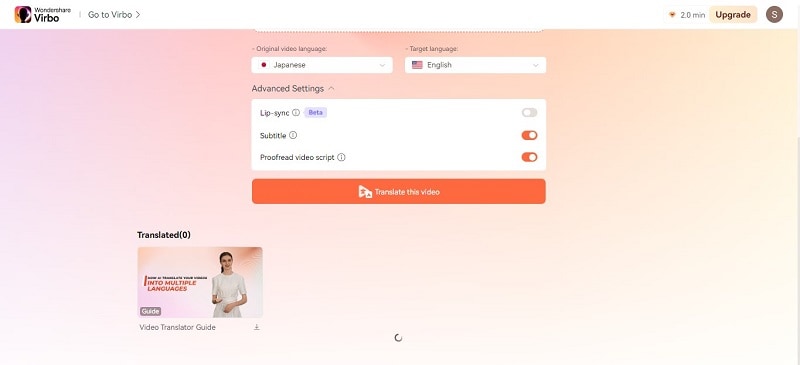
- Step 5: Click Translate this video to start the translation process once everything is set.
- Step 6: Wait a few moments while Virbo performs video transcription. Review the text and edit if needed.
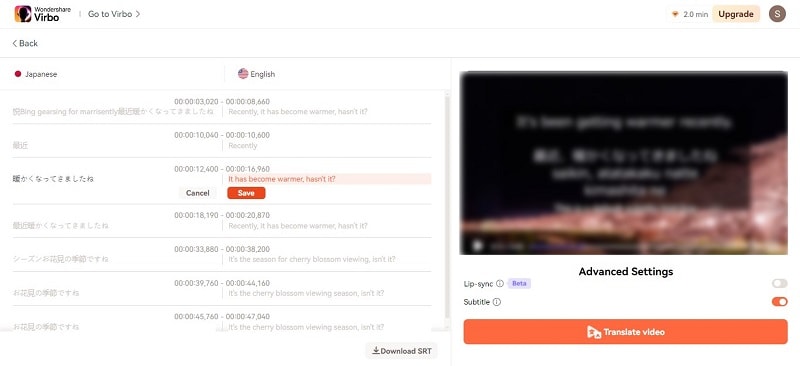
- Step 7: Click Translate video to proceed, then the video will go to the queue.
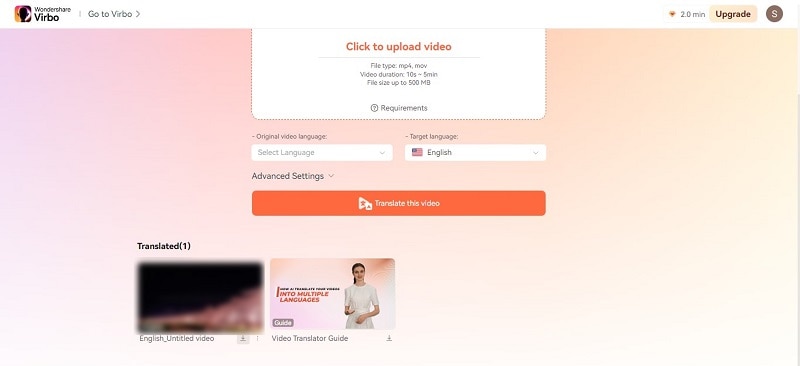
- Step 8: After completion, you can preview the translated video before downloading the final English version.
Part IV. How To Achieve the Best Video Translation Results?
You can’t always translate a video from Japanese to English without a few difficulties. Here are some ways to make the process easier for you:
Divide the Script Into Manageable Chunks
Break down the script into smaller sections like sentences, phrases, or even shorter segments depending on the video’s pace and complexity. It allows for more precise timing adjustments later.
Use a “Shadowing” Technique
As you watch the video, read the translated text out loud. Adjust the subtitle timing to match how you naturally speak. Doing this makes the flow feel more natural for you and the viewers.
Test and Refine
Now that you’ve set the timing for the subtitles, it’s time to put them to the test with your target audience. This step is important because it helps you catch any timing problems, awkward phrasing, or cultural differences that might have slipped through during editing.
Listen to what your audience says, and then use that feedback to tweak the subtitles. Your goal is to make sure they’re clear, short, and match the audience’s culture.
AI for Pre-Translation Tasks
Take advantage of AI tools for speech-to-text conversion and automatic subtitle generation. It can save time, but always proofread for accuracy and natural flow.
File Compatibility
Ensure your chosen translation service or tool supports the format of your video file. The common formats include MP4, MOV, and AVI.
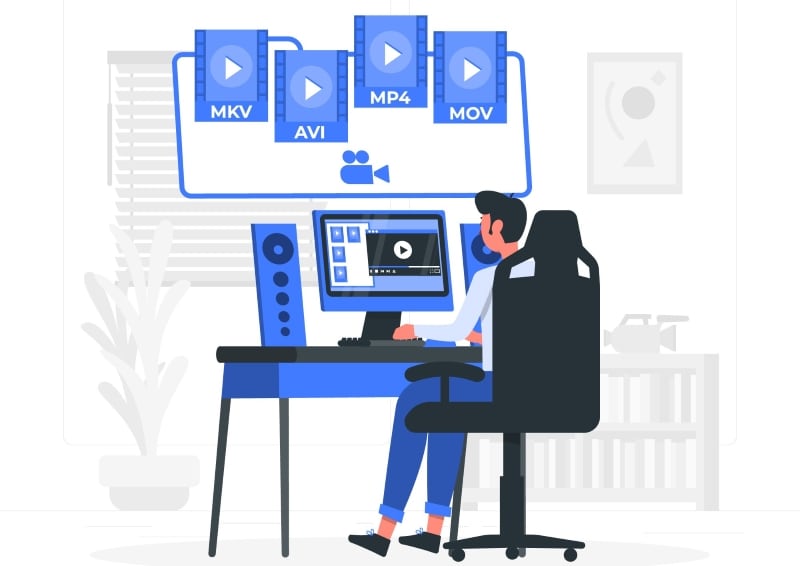
Conclusion
So you’ve seen how easy it can be to translate a video from Japanese to English. It’s up to you whether you will ask for the help of human translators, video editors, or AI video translators.
As you know, Virbo goes beyond being a basic Japanese to English video translator and converter. It takes the complexity out of translation, offering seamless and accurate results.
But remember, even the best AI translation can benefit from a human touch. Don’t be afraid to experiment and refine your translated video for the best outcome. With a little effort, you can bridge the language barrier and share your Japanese video content with the world.
Let’s say you’re a business owner or a content creator in Japan. If you want to broaden your horizons, you may need to translate videos from Japanese to English. This is because English is spoken globally. You can sell more, share knowledge, and connect with English speakers worldwide.
For streaming platforms, turning Japanese content into English is a ticket to reaching audiences all over the globe. And businesses using Japanese tech might need translated training videos for their remote workers.
Seeing this growing need, it’s clear you need effective video translation solutions. So, we’ve created a guide to help you choose the best method for each step, including using AI. Finding the right way to translate videos is important, so keep reading!

Part I. Completed Process To Translate Videos From Japanese to English
When you want to translate a video from Japanese to English, you can follow some general steps, no matter how you decide to do it. Let’s break down each step for you:
- Step 1: Video Transcription
Before you can translate, you need to understand what’s being said. So, the initial step is to do a video transcription. You can either hire professionals or use a Japanese-to-English video translator app to convert the spoken language to text.
Transcription captures all the Japanese dialogue, ensuring the English translation is spot-on. Having the text file lets you edit it, like shortening sentences or adjusting cultural references. This results in a smoother and more natural English video for you.
- Step 2: Translation
Once you have the transcript, you can translate the Japanese text into English. A good translation ensures the original message is accurately conveyed in the new language. It avoids any misunderstandings or misinterpretations for your English viewers. You have two options to do it. Both have strengths and weaknesses, so let’s see which suits your needs best.
- Professional Human Translation Services
When you want to translate a video from Japanese to English, a pro can make the sentences sound right for your audience. These professionals tweak the tone to be natural and engaging. If you go to translation agencies, they make sure the work is top-notch by going through strict editing and reviewing. However, human translation services cost more and take a bit more time than machine translation tools.
- Machine Translation Tools
Machine translation tools are fast and affordable. They can be a good option for short, simple videos where perfect accuracy isn’t critical. But it often struggles with complex language, cultural references, and humor.
- Step 3: Timing and Implementation
Let’s talk about making the Japanese to English video translation seamless. After translating, you want the words to match the original rhythm and pace of the speaker in the video. It keeps things feeling natural and engaging for you, the viewer. Plus, speakers use non-verbal cues like jokes, emotions, and pauses. Matching the translated text with these visual cues keeps the video’s meaning and impact intact.
How to do it? Professional workflows often use timecode, which gives each video frame a unique timestamp. It ensures super precise subtitle placement for that perfect synchronization. Some video editing tools even have “waveforms” to help visually line up subtitles with the spoken parts.

Here are several ways to add the translated Japanese text to your video:
- Subtitles
Subtitles are like on-screen translators for you. They show the English dialogue while the original Japanese audio goes on. It helps you understand if you get the visuals but not the language. The focus is on getting the main point across and sometimes making the sentences shorter for easier reading.
- Closed Captions
Like subtitles, closed captions (CC) are words shown on the screen. They go beyond spoken words, covering all the sounds you hear, like dialogue, music, and even background noises. The main goal is to help you, especially if you’re deaf or struggle with hearing. So, if you’re aiming for videos everyone can enjoy, try a video translator from Japanese to English with CC capabilities.
- Dubbing
Dubbing is a more intricate process where the original Japanese audio track is completely replaced. Voice actors step in to record the translated script in English. They try to sync up their words with the lip movements of the characters on screen. It makes it seem like the characters speak English right from the start, giving you a more immersive viewing experience.
- Voiceover
In this method, a narrator reads the translated script in English over the original Japanese audio. It’s often used in documentaries or educational videos when you need more info beyond just the dialogue.
- Step 4: Final Review and Approval
Alright, so you’re at the last step now. You’re giving the translated video a good check to ensure everything’s spot-on – accurate, consistent, and top-notch quality. It means looking out for any problems in the translation, timing, or how you choose to do it. Once you give the thumbs up to the final version, you’ve got a smooth and effective English video ready for your audience.
You might find the previous steps tedious and time-consuming. But what if you could translate your video from Japanese to English in minutes? That way, you could reach new markets and expand your influence faster. AI video translators like Wondershare Virbo can help you spread your work, passions, and stories to a global audience. Read on to learn more.
Part II. Virbo: Realistic AI Japanese to English Video Translator
You’re excited about your new product, but your explainer video feels like it’s only speaking to half the world. You know the potential exists, but the language barrier holds you back. Or perhaps you’ve captured stunning footage from your recent trip to Kyoto, but sharing it with your followers feels like a lost cause.
Here’s the deal: you don’t have to stick to a small crowd.

Get Started Online Free Download
Virbo uses the latest AI tech to automatically translate, dub voice, and add synced subtitles to your Japanese video. This app is simple to use and can translate video content into over 20 languages. Virbo translates Japanese to English videos in a few minutes – all free for videos under 2 minutes!
Here’s what makes Virbo stand out:
- Precise Lip-sync: Say goodbye to awkward, out-of-sync translations. Virbo AI video translator ensures the translated dialogue seamlessly matches the speaker’s lip movements and facial expressions, creating a natural and engaging experience (still in beta, but getting better every day!).
- AI Cloning Voices: Add engagement with Virbo’s AI-cloned voices that capture the essence of human speech. Choose from a range of natural-sounding voices that express the right emotions and add personality to your content.
- Soundtrack Reserved: Don’t lose the original soundtrack that sets the mood. Virbo allows you to keep it intact, enhancing its impact even in different languages.
- Versatile Compatibility: Virbo works across various platforms, including Windows, iOS, and Android. You can even use it online for ultimate flexibility.
- Affordable Excellence: Experience the power of AI video translation without breaking the bank. Virbo offers high-quality solutions at affordable prices, making them accessible to everyone.
Part III. How To Translate Japanese to English Video Using Virbo Automatically
Using Virbo AI video translator can help you be more productive. Here’s how to translate a video in Japanese to English online for free:
- Step 1: Go to Virbo AI video translator online from your browser for quick access. You can also download the app for your desktop. Once you’ve chosen your access point, sign in using your existing Google, Facebook, email, Apple, or Twitter account.
Get Started Online Free Download
- Step 2: Choose and upload your Japanese video file from your local storage. Ensure the video is between 10 seconds to 5 minutes long and in MP4 or MOV format, up to 500 MB for optimal processing.

- Step 3: Specify Japanese as the Original video language and English as the desired Target language.
- Step 4: Virbo offers Advanced Settings to customize the translated view result. Toggle on the Lip-sync, Subtitle, and Proofread video script switches to enable them when needed.

- Step 5: Click Translate this video to start the translation process once everything is set.
- Step 6: Wait a few moments while Virbo performs video transcription. Review the text and edit if needed.

- Step 7: Click Translate video to proceed, then the video will go to the queue.

- Step 8: After completion, you can preview the translated video before downloading the final English version.
Part IV. How To Achieve the Best Video Translation Results?
You can’t always translate a video from Japanese to English without a few difficulties. Here are some ways to make the process easier for you:
Divide the Script Into Manageable Chunks
Break down the script into smaller sections like sentences, phrases, or even shorter segments depending on the video’s pace and complexity. It allows for more precise timing adjustments later.
Use a “Shadowing” Technique
As you watch the video, read the translated text out loud. Adjust the subtitle timing to match how you naturally speak. Doing this makes the flow feel more natural for you and the viewers.
Test and Refine
Now that you’ve set the timing for the subtitles, it’s time to put them to the test with your target audience. This step is important because it helps you catch any timing problems, awkward phrasing, or cultural differences that might have slipped through during editing.
Listen to what your audience says, and then use that feedback to tweak the subtitles. Your goal is to make sure they’re clear, short, and match the audience’s culture.
AI for Pre-Translation Tasks
Take advantage of AI tools for speech-to-text conversion and automatic subtitle generation. It can save time, but always proofread for accuracy and natural flow.
File Compatibility
Ensure your chosen translation service or tool supports the format of your video file. The common formats include MP4, MOV, and AVI.

Conclusion
So you’ve seen how easy it can be to translate a video from Japanese to English. It’s up to you whether you will ask for the help of human translators, video editors, or AI video translators.
As you know, Virbo goes beyond being a basic Japanese to English video translator and converter. It takes the complexity out of translation, offering seamless and accurate results.
But remember, even the best AI translation can benefit from a human touch. Don’t be afraid to experiment and refine your translated video for the best outcome. With a little effort, you can bridge the language barrier and share your Japanese video content with the world.
Ultimate Guide to Translating YouTube Videos Without CC
We are living in the age of social media, and YouTube is the world’s most popular video-sharing social platform. People use it to share knowledge, entertainment, and their views on diverse subjects. As it’s a global platform, people from all over the world can upload their content. This can, sometimes, create problems, particularly if the content is in a foreign language. Unfortunately, the language barrier hinders our understanding of a topic more often than we admit. While the YouTube Closed Captions (CC) feature offers some respite, not all videos have this option. In this article, we will discuss how to translate YouTube video without CC on your personal computer, so that you can explore and enjoy any content you want. Let’s dive in!
Unique Features of Virbo Auto Translate
As highlighted above, Wondershare Virbo can translate your videos with automation. In this regard, let’s explore its auto-translate feature to understand how it turns out to be a helpful option:
- Extensive Language Support: Virbo can translate videos into more than 20 languages. You can generate respective AI-cloned voices by selecting the appropriate source and target languages.
- Subtitle Generation: While you can translate a video, it can also generate translated subtitles. However, ensure that the origial video that you want to translate does not have subtitles, it would help achieve optimal accuracy and quality of the generated subtitles.
- Advanced Lip-Sync Option: The lip-sync feature changes the lips’ movement according to the words spoken after being translated into the target language. For the successful execution of this feature, you need to ensure a proper clip is added according to the tool’s requirements.
- Retains Background Music: The background music from the original video can be retained after the translation process is concluded. It will replace the human voice for translation, and the music will be the same.
Additional Features of Wondershare Virbo
Wondershare Virbo isn’t limited to an AI video translation feature; it is a comprehensive AI video generator. Without a camera and crew, anyone can make engaging videos. The following are some incredible features of Virbo that you should go through for a clear picture:
- AI Script: If you fail to describe your story through appropriate words, try this feature of Wondershare Virbo. It can write a compelling script based on your prompts and requirements. You can enter the topic in 2000 characters and choose a script tone using smart optimization.
- AI Avatar: As stated earlier, you don’t need a crew to make videos with Virbo. This AI software offers hundreds of AI avatars to cut the need for actors and artists. Wondershare Virbo has avatars from diverse ethnicities, attire, races, age groups, and regions.
- AI Talking Photos: To make funny videos of your friends, Wondershare Virbo offers a talking photo feature. In this regard, upload a straight-looking image of your friend and choose the video layout. Add a script in audio or text format so the picture can start talking.
Translate Online Download APP Now Free Download
Part 2. Step-by-Step Guide: Auto-Translating YouTube Videos Without Closed Captions
Below is a simple step-by-step guide to translate Youtube video to English without cc. You can also use the same steps to translate your video into other languages like Chinese, German, Hindi, etc.
Step1Download Virbo and launch its video translator
Go to the official Virbo link and download its latest version (or you can directly click the following download button). Install it on your computer. Once the setup finishes, launch Virbo and go to Video Translator as seen above.
Translate Online Download APP Now Free Download
Step2Set your preferences and start translating videos
Upload a video, set its original language and the language you want it translated into. Now select the rest of the settings as per your requirements. Finally, Click the Translate this video button to begin translation.

Step3Preview the translated video, make changes, and download
When the auto translation completes, preview the translated content. Check for any mistakes and correct them if necessary. If everything is good, then click the Download button at the bottom to save it on your device.

Translate Online Download APP Now Free Download
Part 3. Tips for Effective Translation - How To Translate Correctly With AI Tools
AI tools are just as good as people using them. If you’re not vigilant and don’t review the output, chances are you will get inaccurate or bad translations. Below are our tips to effectively translate YouTube video without cc that can help you get the most out of any AI translation tool.
01Understand the Context
AI tools often lack a complete understanding of the context. Writing a sentence out of context can totally change the message being conveyed. Therefore, you understand the overall meaning before finalizing a translation draft.
02Clear Up any Ambiguities
Ambiguous phrases are words in a language that convey more than one meaning, which can lead to inaccurate translations. So, clear up any ambiguous terms or expressions. Selecting a particular meaning of a phrase for your translation requires a keen eye for detail.
03Consider the Cultural Nuances
Every two cultures are different. This is particularly true if the two are from vastly different geographical regions of the world. So, you have to take into account the cultural nuances of both languages to ensure the translation doesn’t convey unintended meaning.
04Use Reputable & Accurate Tools
Always use reputable names for your transactions. There’s a good reason why some tools are more popular than others. Take Wondershare Virbo as an example. Virbo provides accurate and better translations for YouTube Videos than most other tools in the market.
05Don’t Be Afraid To Customize
Sometimes, the translation doesn’t need to be accurate word for word. You can customize the translation to convey the message in a better way. Some AI tools allow customization. You can adjust settings or provide additional context to improve the accuracy of a translation.
06Handle Idioms With Care
AI tools don’t translate idiomatic expressions in a good way. They translate in a literal way, which destroys the entire message. So, you should be aware of idiomatic expressions and always ready to find their best equivalents in a target language.
07Hire A Human Editor
If possible, have a human editor take a look and review the translation. The human eye can catch certain nuances that AI might miss. With a human editor, you have the confidence that they will be updated about translations and how to improve the message being conveyed.
FAQs
Before concluding the discussion, let’s clarify some common queries in this section. Continue reading to get your answer on how to translate YouTube videos without CC:
- How do you watch YouTube videos in another language?
Watching YouTube videos in another language is not directly supported by YouTube. If you want to translate it, download the video using any third-party service. Consequently, upload it on Wondershare Virbo and translate it into any language you want.
- How to translate YouTube comments?
If any comment on your video is in another language, translate it to respond to them. For this purpose, copy that comment and head to Google Translate on your browser. There, choose languages, and the comment will be automatically translated. For more precise results, you can use the AI Translation feature of Wondershare Virbo.
- How do you download YouTube SRT files?
YouTube has no built-in option to provide you with an SRT file of subtitles. Instead, you can use Virbo - AI Video Translator (Online Version) to download the YouTube video SRT File. It even allows you to proofread the script of the video before exporting it to your device.
Translate Online Download APP Now Free Download
Conclusion
All said, Wondershare Virbo emerges as an indispensable solution for transcending language barriers for YouTube video translation. Its unique features, as outlined in the step-by-step guide, empower you to effortlessly translate youtube video without cc into any language of your choice. For effective translation, the tool ensures not just convenience but also accuracy, addressing the nuances of language with finesse. With Wondershare Virbo, the future of multilingual content creation on YouTube becomes not just a possibility but a seamless reality. So, try Virbo’s new features and let us know what you think!
Translate Online Download APP Now Free Download
The Ever-Changing Era of AI Video Translation: A Reality to Be Fulfilled
The landscape of video creation is continuously evolving with the advancement of AI. It has reduced the manual efforts of video production with automated processes. Content creators translate their videos for a powerful impact on the audience. In this regard, they prefer AI translate video tools to translate large volumes of videos.
Otherwise, human translators and related equipment prove costly. That’s why it’s a practical solution when overseen by humans for quality assurance. So, this article will show the practical applications of translating video content. Besides, you will find the best online tools that offer AI translate video features.
Part 1. Wondershare Virbo: Breaking the Barriers in AI Video Translation
Wondershare Virbo is an AI tool that can translate videos into over 300 languages and voices. It can generate engaging AI-talking avatar videos with natural-sounding voices. Such videos can boost your digital marketing campaign with attractive content. AI videos remove the need for employee training resources and live trainers. Overall. It reduced the traditional learning costs while creating the most impactful videos.

Get Started Online Free Download
Video Translator Feature – A New Addition
This feature of Virbo offers AI to translate video into selected voices along with subtitles. Users can upload their video, ranging from 10 seconds to 2 minutes. Moreover, it allows you to check the option of an AI generator for translated subtitles. Later, you can hit the keep background music option that will only change human voices.
After uploading a video, you must pick the original language of the video. Then, you should choose a language for voiceover or translation. Also, users can select the accent or tone of the translated voices from the given options.

Other Notable Features of Wondershare Virbo
1. AI Avatar
They are digital representations of humans to present without revealing identity. This AI tool offers natural-looking avatars of more than 300. You can select any avatar by specifying a search with Gender and attire filters. After choosing an Avatar, users can set their background from business or other groups.
2. AI Voice
This feature of Virbo allows you to convert text into speech. It is regularly updated to match your needs. You can get many voice tones like calm, energetic, mature, gentle, and fluent. It allows you to adjust the volume, speed, and pitch of the AI-generated voice. Furthermore, users can change the gender and language of the voice as required.
3. AI Script Generator
Save your time and get a customized script with the integration of ChatGPT and Virbo. It creates engaging, lengthy, or professional type of content from smart optimization. Users can also paste their script and prompt to re-write that text. When you get the desired script, choose portrait or vertical mode to create the video.
4. Talking Photos
Make your photos speakable by using this feature of Virbo. For this purpose, you have to upload a straight-looking face picture instead of a selfie. Apart from importing any image, you can select any AI photo from the given options. Later, users have to paste their script to make a talking photo.
5. Video Templates
Pick a well-crafted video template instead of editing from scratch. There are video templates from festivals, e-commerce, advertisements, and many other domains. Despite selecting from such domains, you can search for a template with a topic input. You can still customize the chosen template by changing the background or adding text to it.
Get Started Online Free Download
Part 2. What Are the Basic Applications of Translating Video Content?
Translating video is not only about language; it’s also about making content reachable. It ensures that the message is delivered impactful across cultures and regions. Translating content can connect people from different linguistic backgrounds. It removes language barriers whether you belong to the education or business sectors. Thus, get to know more applications in the given section:
1. Healthcare and Medical
Medical professionals consider AI translate video for many healthcare aspects. Mainly, they use translated content for communicating with different language-speaking patients. It is also used to share research findings and medical training globally. This way, international participants are able to easily understand the informative discussions.
2. Legal and Compliance
It refers to translating video content that complies with legal requirements. In such cases, legal documents, contracts, and related videos are translated. This way, users ensure that everyone can understand the multinational business that they are signing. It is important because any misinterpretations can cause legal disputes.
3. Entertainment and Media
This industry is currently using AI translate subtitles more than other domains. The media industry translates movies, TV shows, series, and other streaming content. It allows a broader universal audience through subtitles and dubbing. You might have also observed streaming services like Netflix and Disney+ relying on video translations. They invest in dubbing videos to reach international subscribers.
4. Tourism and Hospitality
Travel agencies look for promotional videos that can showcase culture and destinations. These videos are translated into Spanish, Chinese, or English languages to attract tourists. Translated videos can provide virtual tours of historical places or guide visitors. Restaurants also use translated videos to explain dishes and menus to international tourists.
5. E-learning and Education
Educationists and trainers can create bilingual courses through video translation. They use AI translate videos to customize learning paths for diverse learners. It is especially fruitful for non-English speakers to learn in their native language. Besides, enabling translated subtitles can help slow-paced or impaired learners in grabbing concepts.
Part 3. How Is AI Influencing Video Translation on a Practical Level?
Technology advancements put video creation and editing at ease. The emergence of Artificial Intelligence has positively influenced video translation and creation. It makes the process accurate, cost-effective, and accessible to all. Content creators, businesses, and educationists are filling the language gaps with translated videos. So, let’s learn how AI influences video translation without further delay:
1. Voiceovers and Dubbing
AI-powered tools can generate natural-sounding voiceovers in different languages. Such dubbing and voiceovers are not much more distinguished than human voices. You can get multiple translated videos with the use of machine translation models. Moreover, they can add automatic subtitling on streaming services like YouTube and Vimeo.
2. Language Learning
Students can listen to native speakers and receive translations with AI algorithms. It enables them to grasp the pronunciation of words and learn their meanings. When students watch videos with translated subtitles, they can identify their weak areas in learning. It can also help in improving the vocabulary and grammatical skills of learners.
3. Multilingual SEO
Multilingual SEO means optimized content on search engines and websites. Its primary goal is to improve visibility across different regions and languages. Translation and localization of video content can expand discoverability in various locations. AI algorithms analyze user experiences and suggest relatable or user-preferred language content.
4. Real-time Translation
AI translate video provides solutions to live broadcasting and video seminars. It proves valuable for international news, reporting, events, and global business meetings. AI-driven translation systems recognize speech and provide translation on the screen. The natural language processing and machine learning models detect conversation for translations.
5. Enhanced Post-Editing
Human translators can get help from AI in an exact and faster translation process. In this regard, machine translation systems can provide a baseline that humans can refine. They can adjust translations to fit with the context and tone of the video. You can get assistance to remove potential errors in translation, like terminology discrepancies.
Part 4. Some Pre-Existing Online Tools Offering AI Translation
Online translating tools are beneficial for efficient and affordable solutions. They make global communication accessible and correctly align with growing users’ needs.
The internet is full of online software for AI translate subtitle generation. Selecting a secure and reliable tool is still a concern to get high-quality outputs. Thus, we have enlisted some of the best online AI video translating tools to ease your selection.
1. VEED.io
VEED.io is an online tool for recording and editing professional videos on one platform. This video editing tool can translate your subtitles into different languages manually. It enables you to upload a subtitles file and adjust the video as required. Besides, it claims to produce 98.5% accurate translation and subtitling services.

Key Features:
- Upload subtitle files with VTT, TXT, and SRT formats to get subtitles added to the video.
- Offers preset styles library and effect library for subtitles.
- Allow manual changes of subtitle check-in and check-out timing in the video.
2. Maestra
This AI-powered tool offers voice-overs, transcriptions, and caption-generating services. Users have to upload their audio or video files to translate into more than 100 languages. Besides using this AI translate video for subtitles, you can get dubbing of videos with your chosen speakers. After generating subtitles, you can edit and export into PDF, TXT, SRT, and VTT formats.

Key Features:
- Change subtitles’ font style, font size, color, positions, and characters per line.
- Collaborate and give access to teammates for editing auto-generated subtitles.
- Embeddable player allows you to export the generated subtitles without downloading the video.
3. Kapwing
Edit, trim, and enhance videos with this AI tool with cutting-edge technology. AI translate subtitle is one of its features in terms of AI video creation and editing. You can paste a YouTube video link or upload a file from Google Drive and Google Photos. After getting subtitles, users can translate them into different languages or edit them.

Key Features:
- Adjust characters per subtitle in your video as desired.
- Resize the video canvas for direct sharing on social media platforms.
- You can browse misspelled words and manually correct them.
4. HeyGen
HeyGen is originally an AI video creator but also offers a video translation feature. To translate a video, you have to upload an MP4 video with a 500 MB file size. The file size uploading limit depends on the credits and plan you are using. It requires uploading videos of 30 seconds minimum and 5 minutes maximum.

Key Features:
- Despite uploading an MP4 video, you can make a video from a webcam in HeyGen.
- Gives you the option to translate video or translate audio files.
- Multi-speaker translation and proof translation options are available in its enterprise version.
5. Wavel.AI
Elevate videos, films, and presentations with this video dubbing and subtitle-generating AI tool. It offers translation in over 40 languages with male and female voices. You can upload a 2-minute video of 100 MB while using its free version. The generated subtitles can be split, merged, and added to the video according to users’ preferences.

Key Features:
- Users can highlight and strikethrough the subtitles text in the video.
- You can set minimum and maximum subtitle duration in the clips.
- It allows you to choose the emotion, pitch, volume, and speed of the translator.
Conclusion
To sum up, AI has reduced the manual efforts in the video production and editing industry. Now, you don’t have to translate video through professional translators. For this purpose, AI tools can serve different fields of video translation. This article has also discussed the practical applications of AI translate video tools.
In search of the best translation tool, you can rely on Wondershare Virbo. This AI tool has all the essential features to create an AI avatar video and translation. That’s why digital creators and other professionals prefer this AI tool.
Get Started Online Free Download
Must-Have Apps for Real-Time Video Translation
Want to watch a video on YouTube, but the captions are in a language you don’t understand? Maybe you have an upcoming work call with international colleagues. Or perhaps you want to catch a live stream, but the language barrier throws you off. Even watching video content on social media apps can feel frustrating when the influencers speak a different language.
So, what can you do? Are there any apps that can translate a live video playing on your device? If any of these scenarios sound familiar, then keep reading. This article will show you the best real time video translation tools around. We’ll help you bridge the language gap and conquer video content, no matter what language it’s in.

Part 1: Overview of the Best Tools for Real-Time Video Translation
Choosing the right tool to translate videos in real-time can be tricky, so it’s important to understand what you need it for first. Don’t worry, though! Here’s a list of the best apps that can help you, which we’ll explore in more detail next.
| Real Time Video Translation App | Best for (Use Case) | Platform Compatibility | User Ratings |
|---|---|---|---|
| Wondershare Virbo | Advertising, social media, and businesses | Windows, iOS, Android, and web browser | 4.8 out of 5 |
| GlotDojo | Watching on Netflix and YouTube | Browser extension, iOS, and Android | N/A |
| InterSub | Learning new languages | Browser extension in Chrome, MS Edge, and Firefox | 5 out of 5 |
| SyncWords | Watching live-stream videos | Cloud-based | 4.7 out of 5 |
| Wordly | Remote meetings | Most event platforms and service providers | 4.4 out of 5 |
| Interprefy | Live broadcasts and watching on YouTube | iOS, Android, cloud-based | 4.6 out of 5 |
| EventMobi | Virtual events | Web browser, iOS, and Android | 4.6 out of 5 |

Part 2: Top 7 Live and Real Time Video Translation Apps
Here’s the detailed information of helpful real time video translation apps to streamline your personal or professional tasks, covering aspects like watching on Netflix, Youtube, or virtual events.
Wondershare Virbo: Best Real Time Video Translation App for Global Audiences

Get Started Online Free Download
Want your ads and other video content to go global? That’s possible. Wondershare Virbo lets you translate a video in real-time into over 20 languages, seamlessly integrating with your workflow. It’s easy to use, so you can instantly expand your reach and engage new audiences. Even better, Virbo’s AI voice cloning ensures perfect audio and visual harmony. So go multilingual and watch your business and social media accounts take off.
Effortlessly streamline your workflow with these powerful features:
- Auto-generate scripts: No more writer’s block; Virbo does it for you. Save time and ensure consistency by having Virbo automatically write your video script.
- Lip-sync precision: No more viewers cringing at awkward pauses or out-of-sync voices. Virbo ensures that translated audio matches lip movements. Imagine your travel vlogs feeling as authentic in Spanish as they do in English.
- AI cloning voices: Give your video personality with AI-powered voice cloning. This emotional connection keeps viewers engaged and understands your message.
- Affordable excellence: Spend within your means. Get high-quality AI video translation solutions at budget-friendly plans.
- Versatile compatibility: Access Virbo from anywhere, on your smartphone, online, or as software on your Windows desktop. This flexibility makes Virbo the perfect video translator app for any content creator.
Pros
- Convenient to use and fast results
- Cross-platform compatibility
- It has an intuitive interface
Cons
- The free plan has restrictions on video length and export options
- Some features are still under development
GlotDojo: Best Real Time Video Translation App for Watching

Ever struggle to understand a funny cooking show on Netflix or a catchy music video from YouTube in another language? GlotDojo can help while you’re watching. It’s a real time video translation app that works on videos from social media apps and streaming services.
Forget switching tabs or pausing constantly. Subtitles appear as you watch so you can understand everything on the fly. This way, you can focus on enjoying the video while learning new words and phrases. So, next time you find a great video in another language, try GlotDojo.
Pros
- Can instantly translate videos on different platforms such as CNN, Amazon, Twitter, and more
- Adjust video speed, save favorite scenes, and repeat/delay subtitles
- User-friendly interface
Cons
- Translations provided may not always be 100% accurate
- Dependence on internet connection
InterSub: Best Real Time Video Translation for Language Practice

Love learning languages but are bored with flashcards? InterSub turns your favorite shows on Disney+, YouTube, or TED Talks into fun vocabulary builders. Instead of just watching passively, you can translate the video in real time by hovering over any word you don’t know. InterSub instantly gives you the definition or translates it into your native language.
Plus, save words you want to remember and quiz yourself later. So, if you want to spice up your video experience and learn a new language along the way, check out InterSub.
Pros
- Engaging in language learning
- Can translate the subtitles of videos while playing
Cons
- Limited to specific streaming services
- Currently unavailable for Safari and mobile devices
SyncWords: Best App To Translate Live Stream Video in Real Time

Do captions and subtitles move too slowly? Want to understand live streams of influencers, gamers, or sellers in another language as they happen? SyncWords offers live captioning. This cloud-based platform uses AI to provide real-time translation for videos.
SyncWords works with live streams that translate the audio into different languages with AI voice dubbing. So, if you face a language barrier, SyncWords can break it down and keep you in the loop.
Pros
- No software installation is needed
- API integration
- Supports translation of over 100+ languages
Cons
- Limited pricing information on their website
- Might struggle with unclear audio, accents, or technical jargon, leading to inaccuracies
Wordly: Best Real Time Translation of Video for Remote Meetings

Planning a business meeting with overseas colleagues but worried about language barriers? Wordly is here to help! It’s a platform that goes beyond simple translation, specializing in conferences. Wordly offers real-time video translation, providing live captions in each participant’s language. It fosters clear communication and a productive meeting environment. So, next time you need to bridge the language gap for a global event, consider Wordly.
Pros
- Scalability works for events with up to 100,000+ attendees
- Integration with various video and event management platforms
- Personalized customer support
Cons
- Might not be suitable for everyone’s budget
- Limited customization options
Interprefy: Best Live Broadcast and YouTube Real Time Translation

Frustrated by YouTube videos without captions? Interprefy can be your bridge to understanding. It’s a cloud-based solution designed specifically for meetings and events, but it works wonders for YouTube videos. Interprefy connects you with professional translators who provide real-time translation on YouTube. When you find a fascinating YouTube video in another language, Interprefy can help you unlock its content.
Pros
- Integration with more platforms like Zoom, Teams, and more
- Can also do close captions and live subtitles
Cons
- Won’t work in areas with bad internet connection
- Takes time to get used to for organizers and attendees
EventMobi: Best Live Video Translation App for Virtual Events

Have a multilingual event but worried about keeping everyone engaged? EventMobi has you covered! This virtual event platform goes beyond scheduling. EventMobi offers seamless integration with services like Kudo, allowing you to translate the video in real time for your virtual event.
Attendees can choose their preferred language from a dropdown menu, and captions appear below the video stream. This way, everyone can participate and engage, regardless of their native language. EventMobi makes your event inclusive and fosters a global conversation.
Pros
- Schedule the live stream session on the app
- Set engagement levels from listening to joining discussions
Cons
- EventMobi can be expensive, especially for smaller events
- Limited design flexibility
Part 3: Considerations and Limitations of Real-Time Video Translation
While the tools above offer exciting possibilities, it’s important to understand their limitations. Here are some considerations when choosing a real-time video translation app. This way, when you use these tools, you’ll know what to expect and what might have some challenges.
Accuracy
Even the best human translators sometimes struggle with complex sentences, slang, or thick accents. Real-time translation of videos using AI is similar. While it’s constantly learning, it might misunderstand some things. So, keep things simple and clear in your videos, especially if your audience might need real-time translation.
Latency
Imagine you’re having a conversation, but there’s a slight pause between your words and the other person’s response. It throws things off a bit, right? That’s kind of what latency is like in real-time video translation. There’s a short delay between what’s spoken and the translated text appearing. For critical conversations, consider using pre-recorded videos with translated subtitles or voiceovers.
Supported Languages
Apps that translate videos in real-time are getting better at handling a wider range of languages, but some are more supported than others. Check the app you’re considering and the languages it supports. If your language isn’t on the list, you might need to look for alternative solutions.

Conclusion
Real-time video translation tools are breaking down language barriers faster. Imagine watching a foreign news report and understanding it instantly or conversing with someone who speaks another language live.
The apps listed here are powerful, but choosing the right one depends on your needs. If you want to understand the content, real-time translation is perfect. But consider AI voice cloning if you need to create videos with a specific voice.
For seamless real-time translation, check out Virbo. It’s a great option to help you bridge the language gap and connect with the world in a new way.

Part 2: Top 7 Live and Real Time Video Translation Apps
Here’s the detailed information of helpful real time video translation apps to streamline your personal or professional tasks, covering aspects like watching on Netflix, Youtube, or virtual events.
Wondershare Virbo: Best Real Time Video Translation App for Global Audiences

Get Started Online Free Download
Want your ads and other video content to go global? That’s possible. Wondershare Virbo lets you translate a video in real-time into over 20 languages, seamlessly integrating with your workflow. It’s easy to use, so you can instantly expand your reach and engage new audiences. Even better, Virbo’s AI voice cloning ensures perfect audio and visual harmony. So go multilingual and watch your business and social media accounts take off.
Effortlessly streamline your workflow with these powerful features:
- Auto-generate scripts: No more writer’s block; Virbo does it for you. Save time and ensure consistency by having Virbo automatically write your video script.
- Lip-sync precision: No more viewers cringing at awkward pauses or out-of-sync voices. Virbo ensures that translated audio matches lip movements. Imagine your travel vlogs feeling as authentic in Spanish as they do in English.
- AI cloning voices: Give your video personality with AI-powered voice cloning. This emotional connection keeps viewers engaged and understands your message.
- Affordable excellence: Spend within your means. Get high-quality AI video translation solutions at budget-friendly plans.
- Versatile compatibility: Access Virbo from anywhere, on your smartphone, online, or as software on your Windows desktop. This flexibility makes Virbo the perfect video translator app for any content creator.
Pros
- Convenient to use and fast results
- Cross-platform compatibility
- It has an intuitive interface
Cons
- The free plan has restrictions on video length and export options
- Some features are still under development
GlotDojo: Best Real Time Video Translation App for Watching

Ever struggle to understand a funny cooking show on Netflix or a catchy music video from YouTube in another language? GlotDojo can help while you’re watching. It’s a real time video translation app that works on videos from social media apps and streaming services.
Forget switching tabs or pausing constantly. Subtitles appear as you watch so you can understand everything on the fly. This way, you can focus on enjoying the video while learning new words and phrases. So, next time you find a great video in another language, try GlotDojo.
Pros
- Can instantly translate videos on different platforms such as CNN, Amazon, Twitter, and more
- Adjust video speed, save favorite scenes, and repeat/delay subtitles
- User-friendly interface
Cons
- Translations provided may not always be 100% accurate
- Dependence on internet connection
InterSub: Best Real Time Video Translation for Language Practice

Love learning languages but are bored with flashcards? InterSub turns your favorite shows on Disney+, YouTube, or TED Talks into fun vocabulary builders. Instead of just watching passively, you can translate the video in real time by hovering over any word you don’t know. InterSub instantly gives you the definition or translates it into your native language.
Plus, save words you want to remember and quiz yourself later. So, if you want to spice up your video experience and learn a new language along the way, check out InterSub.
Pros
- Engaging in language learning
- Can translate the subtitles of videos while playing
Cons
- Limited to specific streaming services
- Currently unavailable for Safari and mobile devices
SyncWords: Best App To Translate Live Stream Video in Real Time

Do captions and subtitles move too slowly? Want to understand live streams of influencers, gamers, or sellers in another language as they happen? SyncWords offers live captioning. This cloud-based platform uses AI to provide real-time translation for videos.
SyncWords works with live streams that translate the audio into different languages with AI voice dubbing. So, if you face a language barrier, SyncWords can break it down and keep you in the loop.
Pros
- No software installation is needed
- API integration
- Supports translation of over 100+ languages
Cons
- Limited pricing information on their website
- Might struggle with unclear audio, accents, or technical jargon, leading to inaccuracies
Wordly: Best Real Time Translation of Video for Remote Meetings

Planning a business meeting with overseas colleagues but worried about language barriers? Wordly is here to help! It’s a platform that goes beyond simple translation, specializing in conferences. Wordly offers real-time video translation, providing live captions in each participant’s language. It fosters clear communication and a productive meeting environment. So, next time you need to bridge the language gap for a global event, consider Wordly.
Pros
- Scalability works for events with up to 100,000+ attendees
- Integration with various video and event management platforms
- Personalized customer support
Cons
- Might not be suitable for everyone’s budget
- Limited customization options
Interprefy: Best Live Broadcast and YouTube Real Time Translation

Frustrated by YouTube videos without captions? Interprefy can be your bridge to understanding. It’s a cloud-based solution designed specifically for meetings and events, but it works wonders for YouTube videos. Interprefy connects you with professional translators who provide real-time translation on YouTube. When you find a fascinating YouTube video in another language, Interprefy can help you unlock its content.
Pros
- Integration with more platforms like Zoom, Teams, and more
- Can also do close captions and live subtitles
Cons
- Won’t work in areas with bad internet connection
- Takes time to get used to for organizers and attendees
EventMobi: Best Live Video Translation App for Virtual Events

Have a multilingual event but worried about keeping everyone engaged? EventMobi has you covered! This virtual event platform goes beyond scheduling. EventMobi offers seamless integration with services like Kudo, allowing you to translate the video in real time for your virtual event.
Attendees can choose their preferred language from a dropdown menu, and captions appear below the video stream. This way, everyone can participate and engage, regardless of their native language. EventMobi makes your event inclusive and fosters a global conversation.
Pros
- Schedule the live stream session on the app
- Set engagement levels from listening to joining discussions
Cons
- EventMobi can be expensive, especially for smaller events
- Limited design flexibility
Part 3: Considerations and Limitations of Real-Time Video Translation
While the tools above offer exciting possibilities, it’s important to understand their limitations. Here are some considerations when choosing a real-time video translation app. This way, when you use these tools, you’ll know what to expect and what might have some challenges.
Accuracy
Even the best human translators sometimes struggle with complex sentences, slang, or thick accents. Real-time translation of videos using AI is similar. While it’s constantly learning, it might misunderstand some things. So, keep things simple and clear in your videos, especially if your audience might need real-time translation.
Latency
Imagine you’re having a conversation, but there’s a slight pause between your words and the other person’s response. It throws things off a bit, right? That’s kind of what latency is like in real-time video translation. There’s a short delay between what’s spoken and the translated text appearing. For critical conversations, consider using pre-recorded videos with translated subtitles or voiceovers.
Supported Languages
Apps that translate videos in real-time are getting better at handling a wider range of languages, but some are more supported than others. Check the app you’re considering and the languages it supports. If your language isn’t on the list, you might need to look for alternative solutions.

Conclusion
Real-time video translation tools are breaking down language barriers faster. Imagine watching a foreign news report and understanding it instantly or conversing with someone who speaks another language live.
The apps listed here are powerful, but choosing the right one depends on your needs. If you want to understand the content, real-time translation is perfect. But consider AI voice cloning if you need to create videos with a specific voice.
For seamless real-time translation, check out Virbo. It’s a great option to help you bridge the language gap and connect with the world in a new way.
Top 7 Video Language Converter Online Free
In the ever-expanding digital landscape, content creators are presented with a unique challenge — the diverse linguistic preferences of a global audience.
Enter the transformative world of video language converters, essential tools that play a pivotal role in breaking down language barriers and fostering inclusivity in content creation. This article delves into the reasons behind the increasing need for video language converters and presents a curated list of the top 6 online tools, all of which offer free services.
Part 1: Why the Need Arises to Use the Video Language Converter in the Real-World
In the dynamic landscape of content creation, the demand for video language converter has surged, and with good reason. As content creators strive to engage a global audience, linguistic diversity becomes a critical consideration. Here, the video language converter emerges as an indispensable tool, addressing the challenge of language barriers and enhancing the accessibility of content across borders.
1. Cross-Cultural Communication
In a world characterized by cultural richness, effective communication necessitates breaking down language barriers. Video language converters facilitate cross-cultural communication by enabling creators to convey their messages in multiple languages. This, in turn, promotes a deeper understanding and appreciation of diverse perspectives.
2. Accessibility and Inclusivity
Accessibility is at the core of the video language converter’s role. By providing translations or subtitles, content becomes more inclusive, ensuring that individuals with varying language proficiencies can engage with and comprehend the material. This democratization of content aligns with the principles of diversity and inclusion.
3. Enhancing Educational Content
In the realm of educational content, video language converters play a crucial role in making learning materials accessible to a global audience. Whether its tutorials, lectures, or informative videos, translations break down language barriers, allowing students from different linguistic backgrounds to benefit from the content.
4. SEO and Discoverability
From a practical standpoint, leveraging video language converters enhances the discoverability of content. By providing translations or subtitles, creators improve the search engine optimization (SEO) of their videos, making them more likely to surface in searches conducted in different languages.
Part 2: Top 7 Video Language Converter Online Free
In the ever-evolving landscape of content creation, the availability of online tools simplifies complex processes. Video language converter online free, in particular, has become essential for creators seeking to make their content accessible to diverse audiences. Here, we explore six noteworthy online platforms that offer video language conversion services without any cost, empowering creators to bridge linguistic gaps seamlessly.
1. Wondershare Virbo
In the fast-paced world of digital content creation, the ability to communicate with a global audience is a game-changer. Virbo, a cutting-edge video language translator app, steps into this arena, offering content creators a dynamic platform to transcend linguistic barriers and connect with viewers worldwide. As we delve into Virbo, let’s explore its unique features, advantages, and considerations.

Features
- Whether you’re a seasoned creator or just starting, it’s user-friendly layout ensures a smooth and efficient experience.
- Its advanced speech recognition ensures accurate and nuanced translations, enhancing the audiovisual appeal of your content.
- It ensures that you can translate content dynamically as you create, providing instant feedback on how your video will resonate with a global audience.
Pros
- Its intuitive design ensures that creators of all levels can navigate the app seamlessly.
- Its extensive range of supported languages makes it a versatile tool for connecting with diverse audiences.
- Its commitment to user privacy ensures a secure environment for content creation and translation.
Cons
- It offers an offline mode; some features may be limited without an internet connection.
- For new users, the array of features may require some learning, but the intuitive design helps mitigate this.
Get Started Online Free Download
2. Veed.io
In the realm of online video editing, Veed stands out as a comprehensive platform that goes beyond the ordinary. With its integrated automatic subtitle generator and translator, it brings a new level of efficiency and creativity to content creation.

Features
- It excels in simplifying the subtitle creation process through its automatic generator, significantly reducing the time and effort required for manual transcription.
- The platform stands out with its translation feature, enabling creators to connect with a global audience by converting subtitles into various languages, promoting inclusivity.
- It offers a seamless integration of video editing tools, allowing users to enhance their content within the same platform, eliminating the need for multiple applications.
Pros
- It enables a smooth and efficient content creation process, saving time and effort.
- Its interface is user-friendly, fostering accessibility and ensuring a positive experience for creators at various skill levels.
- It allows users to access their projects from anywhere with an internet connection, promoting flexibility in content creation.
Cons
- It relies on a stable internet connection, which may pose challenges in areas with limited connectivity.
- It offers a range of features; it may not provide the depth of advanced editing tools available in standalone video editing software.
3. Kapwing
Kapwing emerges as a comprehensive video audio language converter, offering a suite of tools that includes a powerful subtitling feature. With a user-friendly interface, it caters to a diverse range of creators seeking versatility in their multimedia projects.

Features
- It offers a dynamic platform for creating subtitles with versatility, allowing users to customize and enhance their multimedia content effortlessly.
- It excels in facilitating seamless translation of subtitles, enabling content creators to reach a global audience by providing multilingual support.
- It provides a range of multimedia editing tools, allowing users to edit and enhance their videos with features like trimming, cropping, and adding additional elements.
Pros
- Its user-friendly approach ensures that both novice and experienced creators can utilize its features.
- Users enjoy creative freedom with its versatile editing tools, allowing them to express their ideas and enhance their content according to their vision.
- Its collaborative editing feature fosters teamwork, making it easy for multiple contributors to work together seamlessly on a project.
Cons
- Its free version may include a watermark on exported content.
- Its functionality relies on a stable internet connection.
4. Subtitle Horse
Subtitle Horse stands out as a dedicated online subtitle and captions editor designed to simplify the process of editing and translating subtitles. With a user-friendly interface and versatile subtitle customization options, it emerges as a valuable tool for content creators seeking efficiency and precision.

Features
- It provides a seamless platform for both editing and translating subtitles, offering a comprehensive solution for content creators looking to enhance their videos..
- It supports a variety of subtitle formats, ensuring compatibility with different video editing software and platforms, enhancing its usability.
- With a user-friendly interface, Subtitle Horse caters to both beginners and experienced users, making the subtitle editing process accessible and efficient.
Pros
- It provides a range of customization options, empowering creators to tailor subtitles to match the style and tone of their videos.
- It allows users to edit and adjust subtitles on the fly, providing immediate feedback and enhancing the efficiency of the subtitling process.
- It supports a range of video formats, enhancing its versatility and making it compatible with different types of video content.
Cons
- It may be less suitable for projects that involve extensive teamwork or contributions from multiple users simultaneously.
- An active internet connection is necessary for utilizing Subtitle Horse effectively.
5. Rev.com
Rev.com stands as a leading platform offering professional transcription and translation services tailored for video content creators. With a commitment to human-generated translations and a reputation for high-quality and accurate results, it emerges as a reliable solution for those seeking precision and professionalism in their video translations.

Features
- It facilitates effortless subtitle editing, allowing users to make precise adjustments to timing, text, and formatting.
- It supports a wide range of subtitle formats, ensuring compatibility with diverse video content.
- It provides users with customization options, allowing them to tailor subtitles to match the visual style of their content.
Pros
- It excels in offering a user-friendly experience, making it accessible to creators with varying levels of expertise in subtitle editing and translation.
- It streamlines the translation process, providing creators with a time-efficient solution to adapt their content for global audiences.
- It supports various formats ensures compatibility with a broad spectrum of video content.
Cons
- It often comes with a higher cost compared to automated alternatives.
- The reliance on human translators may introduce potential delays.
6. Trint
Trint takes center stage as an AI-powered transcription tool, redefining the landscape of subtitle creation with its automated transcription and translation capabilities. This platform not only simplifies the transcription process but also provides powerful tools for refining subtitles, making it a go-to choice for creators seeking efficiency and precision.

Features
- It goes a step further by offering translation services, allowing users to create multilingual subtitles effortlessly.
- From adjusting timing to refining text, these tools ensure that the subtitles align seamlessly with the content.
- Its AI-driven transcription ensures a high level of accuracy, minimizing errors in the transcribing process.
Pros
- It offers precise control over subtitle adjustments, allowing creators to achieve a polished and professional result.
- Its interface is designed to be user-friendly, catering to creators with varying levels of technical proficiency.
- It enables creators to focus more on content creation than on manual tasks.
Cons
- It operates on a subscription model, which may pose budget constraints for some users.
- It relies on a stable internet connection, which might be a limitation in areas with inconsistent connectivity.
7. Happy Scribe
Happy Scribe stands out as a comprehensive solution for creators seeking fast and accurate transcription and translation services for their audio and video content. With its automated capabilities and support for multiple languages, It streamlines the content creation process, making it an invaluable tool for various industries.

Features
- It employs advanced automation technology to transcribe audio and video content swiftly.
- It provides customizable options for transcriptions, allowing users to adapt the output to their specific requirements, whether for subtitles, captions, or written transcripts.
- It facilitates the creation of subtitles and captions for videos, enhancing accessibility and engagement for diverse audiences.
Pros
- It is designed with a user-friendly interface, ensuring that creators can navigate and utilize its features without extensive technical expertise.
- Its Collaborative tools enhance teamwork, allowing multiple users to contribute to transcription.
- It support for multiple languages caters to the diverse linguistic needs of content creators, expanding their reach and impact.
Cons
- It operates on a subscription model, which may present budget considerations for some users.
- Its functionality relies on a stable internet connection.
Part 3: FAQ about the Best Video Language Converter Online
Q1. How do online video language converters work?
These converters use advanced algorithms, machine learning, or a combination of both to analyze the audio or text content of a video. They then generate accurate translations or subtitles based on the identified language, providing a multilingual experience for viewers.
Q2. Can online video language converters translate multiple languages?
Yes, several online video language converters support translation into multiple languages. They are designed to cater to a diverse global audience and provide subtitles or translations in various linguistic landscapes.
Q3. Is there a limit to the video length that online converters can handle?
The capacity to handle video length varies among converters. Some platforms may have limitations on video duration for free versions, while premium versions or professional tools often offer more extensive capabilities.
Q4. Are the translations provided by online converters accurate?
The accuracy of translations can vary depending on the platform. While many online video language converters strive for precision, factors such as language complexity, context, and accents may influence the accuracy of the final output.
Q5. How can I choose the best online video language converter for my needs?
Consider factors such as the languages supported, accuracy of translations, ease of use, collaboration features, and any additional functionality offered. It’s beneficial to explore user reviews and platform specifications to find the converter that aligns with your specific requirements.
Generate Engaging
AI Video in Minutes!
Easily convert text into professional spokesperson videos in over 120+ voices & languages in minutes.
Generate AI Video Free Generate AI Video Now

Conclusion
In conclusion, the era of online video language converters signifies a significant leap in global communication. Whether you’re a content creator or a business expanding its reach, these tools offer a bridge to cross-cultural understanding. Embrace their power, and embark on a journey where every word resonates globally, connecting diverse communities in the vast landscape of digital content.
Easily convert text into professional spokesperson videos in over 120+ voices & languages in minutes.
Generate AI Video Free Generate AI Video Now

Conclusion
In conclusion, the era of online video language converters signifies a significant leap in global communication. Whether you’re a content creator or a business expanding its reach, these tools offer a bridge to cross-cultural understanding. Embrace their power, and embark on a journey where every word resonates globally, connecting diverse communities in the vast landscape of digital content.
Maximize Yandex Translate in Video Translation and Beyond
Technological advancements in the world of video translation have transformed how content is being consumed. Away from automated translation and video dubbing, Yandex translate video allows users to watch videos with instant voice-over translation. By just clicking on the play button of a video, the Yandex video translate feature brings you to a world of new possibilities. In this article, we explore how the Yandex browser translate video works and how it compares to Google. We’ll also share some pro tips for efficient video translation with Yandex translate video.
Part 1. Yandex Browser Video Translation Overview
Yandex browser video translation is a useful tool for watching videos in your native language. The feature is designed to allow users across the globe to watch videos in their native language, regardless of the original language used. This unique feature automatically translates the audio track of a video, displaying the subtitles in a language of your choice.
Capabilities of Yandex Translate in Video Translation
The Yandex browser video translation comes with an in-built translator that shows words and phrases in the language being used in the browser interface. It also comes with additional features, including translating Yandex emoji and Yandex photo translate which improves user experience. These features recognize text in images, providing translation over the source text. This means that you only need to view a video and it will automatically generate subtitles in the language you are using with the browser.
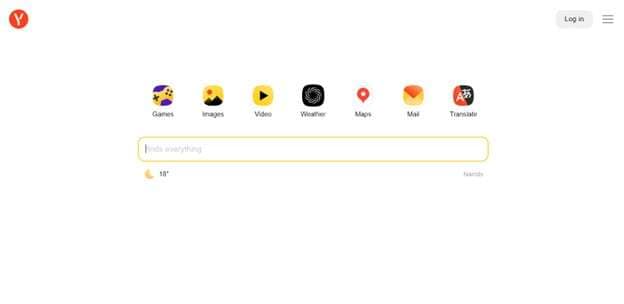
Yandex browser translate video feature automatically detects the language of the loaded pages. It will then ask you if you want to translate it, and allow you to open the translation dialog window once you click the SmartBox. In only a few simple steps, you can translate the languages in any video, text, or image.
- Click “Translate” in the window of the Yandex Browser to translate the page text. From the page text that appears, click Show Original in the window.
- When you play videos, click on the “SmartBox” indicating Translate Video that hovers on top of the video. Choose the language that you want, and select “Show Subtitles”. Yandex will automatically translate the video, allowing you to view it in your native language.
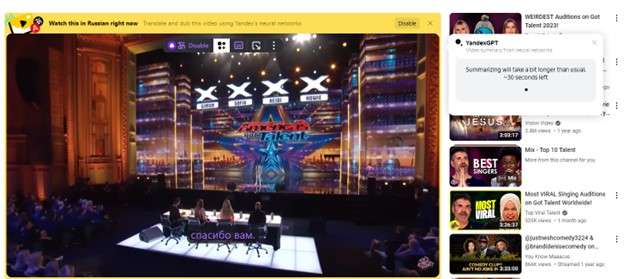
Pros
- Supports Multiple Languages: With Yandex video translate, you can watch any video in over 90 languages
- Accurate Subtitles: The Yandex browser translate video feature automatically generates highly accurate subtitles using speech recognition technology
- Live Translation: Translate any live stream videos in real-time, including conferences and news broadcasts in foreign language
- Offline Translation: Yandex Translate works seamlessly offline by allowing users to download subtitles to their devices for viewing later
- User-friendly Interface: Yandex browser translate video has an easy-to-use and highly intuitive interface that requires users to only click on the Translate button to access the subtitles
Cons
- Users have complained that Yandex translate videos often contain some errors in pronunciation
- Live translation and online video translation usually require an internet connection, and may not always be useful
- The video translation feature is only limited to the desktop version of the Yandex browser
- Users have limited control of the Yandex video translation process, including customizing the subtitles or changing the translation process
- Certain features may be technical for some users and only support certain video formats like MP4 and WEBM
Part 2. Google vs. Yandex: A Comprehensive Comparison
Making a choice between Google and Yandex for video translation can be challenging. The two search engines offer unique experiences and allow users to achieve various tasks. However, each has its strengths and weaknesses. As you explore the options for Google Translate Yandex, let’s have a look at what stands out the most for each.
Here is a quick comparison:
| Metrics | Google Translate | Yandex |
| Supported Languages | 135 | 102 |
| Maximum Documents File Size | 10MB | 5MB |
| Supported Image Formats | JPG, JPEG, PNG | JPG, PNG, GIF |
| Website Translation | Yes | Yes |
| Mobile App | Android & iOS | No |
| Offline Use | Yes | No |
| Translate History | Yes | Yes |
| Voice Input | Yes | Yes |
| Translate Handwriting or Virtual Keyboard | Yes | No |
| Translate Widget | For Android Users Only | Yes |
For a comprehensive comparison, keep reading!
1. Google Translate
Google Translate is widely used both on PC and mobile devices. The easy-to-use feature instantly translates languages in text, images, documents, and websites. With an impressive range of 130+ languages, Google Translate appeals to a whole range of audiences.
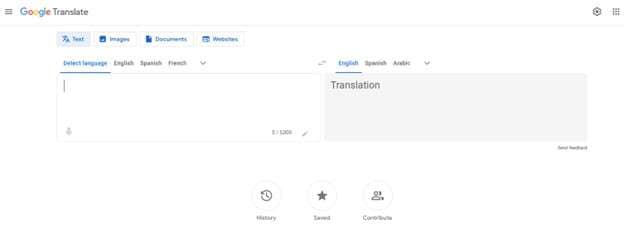
Strengths:
- Larger language support: Supports over 100 languages, making it more versatile.
- Wider platform availability: Available across the web, mobile apps, and various integrations.
- High accuracy: Generally considered the industry standard for translation accuracy.
- Advanced features: Offers offline translation, dictionary lookup, and image translation.
- Extensive data: Trained on a massive dataset, leading to more natural translations.
Weaknesses:
- Limited context sensitivity: May struggle with complex sentences or cultural nuances.
- Limited customization: Users have limited control over the translation style or tone.
- Privacy concerns: Google collects user data for its translation engine.
2. Yandex Translate
The Yandex Translate feature boasts synchronized translation for 102 languages. The feature can translate documents, videos, images, documents, and other forms of media. It also comes with additional capabilities such as predictive typing, pronunciation, dictionary with transcription, context, and usage examples.
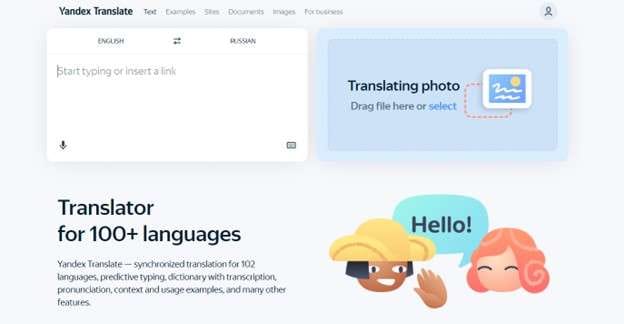
Strengths:
- Stronger in Eastern European languages: Offers superior accuracy for languages like Russian and Ukrainian.
- Live translation: Provides real-time video translation for live streams and conferences.
- User-friendly interface: Simpler and more intuitive interface compared to Google Translate.
- Offline translation: Allows downloading subtitles for offline video viewing.
- Strong in technical terms: Handles technical jargon and terminology more effectively.
Weaknesses:
- Limited language support: Supports fewer languages than Google Translate.
- Limited platform availability: Primarily available on Yandex Browser.
- Less accurate for some languages: May struggle with languages outside its focus area.
- Fewer advanced features: Lacks some of the features offered by Google Translate.
- Less data: Trained on a smaller dataset, which can affect translation accuracy.
3. Choosing the Right Tool for Your Translation Needs
The choice between Google Yandex translate options will depend on your specific needs. Each search engine has its own unique features that make it useful for various kinds of users.
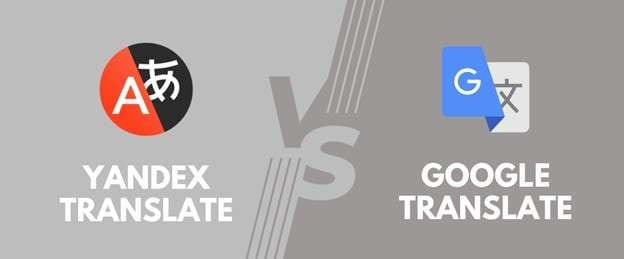
When you need translation for a wider range of languages and platforms, you will find Google Translate a better option. However, Yandex Translate is a better choice when looking to translate Eastern European languages. It is also more useful when you are interested in translating live streams and news broadcasts in a foreign language. In the end, both search engines are helpful and will achieve the desired goal.
Part 3. Pro Tips for Efficient Video Translation
Achieving efficient video translation starts with choosing the right translation. As explained in the previous section, Google and Yandex Translate features are easy to use and produce great results. However, you need to consider your language needs and the level of accuracy you are aiming for before making a choice. To achieve better results, software designed to specially translate videos will do a better job.
Best Free Online Video Translator – Wondershare Virbo
Wondershare Virbo stands out as an effective tool that accurately translates videos in minutes. The AI-powered tool is designed to translate videos, or even generate engaging videos almost instantly. You can further convert text into professional spokesperson videos or translate the voice in your videos to the desired subtitles language. This easy-to-use and provision of great results within a short time makes Virbo a good choice for various kinds of projects. You only need to upload your video to the software, and Virbo will do all the heavy lifting.
Translate Video Online Free Download
Compatibility of Wondershare Virbo:
- Online, Windows, Android, iOS devices
Key Features of Wondershare Virbo:
- AI Video Translator : This feature allows you to achieve global communication with Virbo. Easily translate video content in over 20 languages for viewership and audience needs.
- Auto-Generate Script: Virbo eliminates the need to manually write your script by automatically generating it and ensuring consistency in language and tone.
- AI Cloning Voices: Virbo infuses emotion and vitality in your videos to appeal to different kinds of audiences.
- Lip-Sync Precision: With high precision in lip-sync, every part of the video is harmoniously synchronized to a great viewing experience.
- Soundtrack Reserved: Virbo enhances audience engagement by making video content more memorable.
**

Pros
- Virbo is widely compatible with different kinds of mobile and PC devices, offering a more versatile experience
- An affordable video translator tool that offers budget-friendly prices for all kinds of users
- An easy-to-use and intuitive interface for accurate video subtitle translations
- Multiple language support for various video needs
- Translate videos in the same platform without having to edit subtitles manually
Cons
- Limited language support compared to some advanced and paid options
- Lacks advanced features offered by paid services
How to Use Wondershare Virbo to Translate Video
How to translate video with Virbo? You can do this by following the instructions provided below:
Step 1. Open the Wondershare Virbo Online Tool
Click “Translate Video Online” to open the Wondershare Virbo online tool on a browser. You can also download it on your computer or mobile device.
Translate Video Online Free Download
Step 2. Access Video Translate and Upload Video
Following this, proceed with the “Video Translate” feature from the “More AI Tools” section. Upload your video file by tapping on the “Click to upload video” option, and the video length can be a maximum of 5 minutes. Moreover, the maximum supported file size is 500MB, and file types are MP4 and MOV.
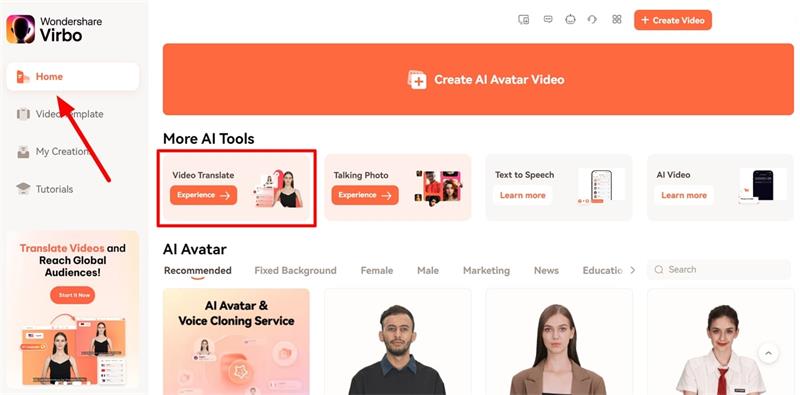
Step 3. Choose Target Language and Advanced Settings
Before starting the video translation process, you need to choose the “Target Language” and enable other advanced settings such as Lip-sync, Subtitle, or Proofread video script. After that, press the “Translate this video” button to initiate the AI video translation process.
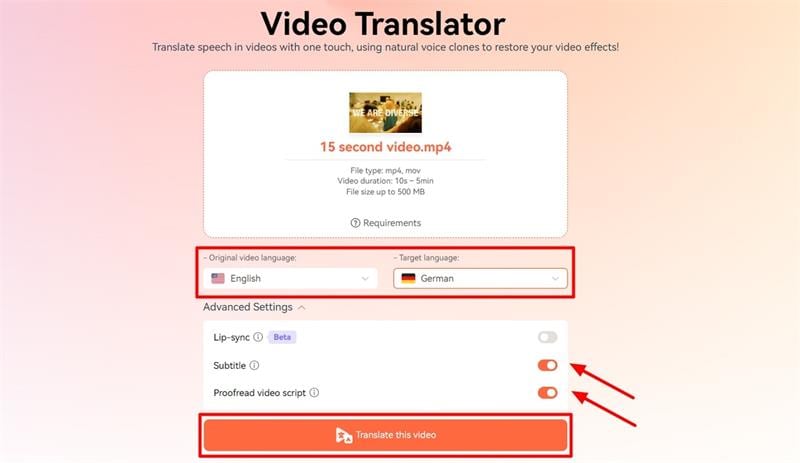
Step 4. Check the Video Script and Finalize the Translation
In case you have enabled the “Proofread video script” feature, you will be able to check the translated video script and edit it according to your requirements. Afterward, press the “Translate video” button and download your translated video once the process is completed.

Translate Video Online Free Download
Conclusion
The Yandex browser video translation is a popular feature for instant and quick video translations. The features work well with different kinds of videos, especially live streams and news broadcasts in Eastern European languages. Although the in-built features offer unique experiences to customers, it is limited in some ways.
Since choosing the right tool is the first step to successful video translation, going with installable software will produce better results. We recommend installing Wondershare Virbo to handle your video translation needs. This is the best free online video translator that is AI-powered to meet the specific needs of various kinds of audiences.
Also read:
- [Updated] Banishing Bogus Followers From Instagram Landscape
- [Updated] Mastering Content & Connections Insta-Follower Rise
- 2024 Approved From Zero to Meme Hero Crafting Engaging GIFs
- 2024 Approved Must-Have Apps for Real-Time Video Translation
- 2024 Approved The Complete Periscope User's Handbook
- 2024 Approved Top 10 Free Video Translators to Mitigate Translation Risks
- Best 5 Udemy Subtitle Translator (Auto Translation) for 2024
- ChatGPT Code Interpreter: Discover 6 Innovative Ways to Utilize It
- Compreayer Printing Guide - Epson ET-2650 USB Driver
- Expert Tips for Restoring Functionality - A Comprehensive Guide to Keyboard Resets
- How to Quickly Fix Bluetooth Not Working on Xiaomi 13T | Dr.fone
- In 2024, Simple and Effective Ways to Change Your Country on YouTube App Of your Apple iPhone 15 Plus | Dr.fone
- SRT Subtitle Translation Tools and Techniques for 2024
- Ultimate Guide to Resolving Dead Space Remake Startup Issues
- Unlocking Global Audiences Top Video Language Converters for 2024
- Updated 2024 Approved Step-by-Step Guide How to Translate TikTok Videos
- Updated Create Lip Sync TikTok Videos Without Installing Any App for 2024
- Updated Kya Aap Video Call Kar Sakty Ho Translate Any Hindi Video Into English
- Updated Revealing Translation Methods Netflix Subtitle Software Comprehensive Guide for 2024
- Title: Translate Video From Japanese to English Online for Free
- Author: Susan
- Created at : 2024-09-30 03:05:57
- Updated at : 2024-10-06 04:52:24
- Link: https://ai-video-translation.techidaily.com/translate-video-from-japanese-to-english-online-for-free/
- License: This work is licensed under CC BY-NC-SA 4.0.

